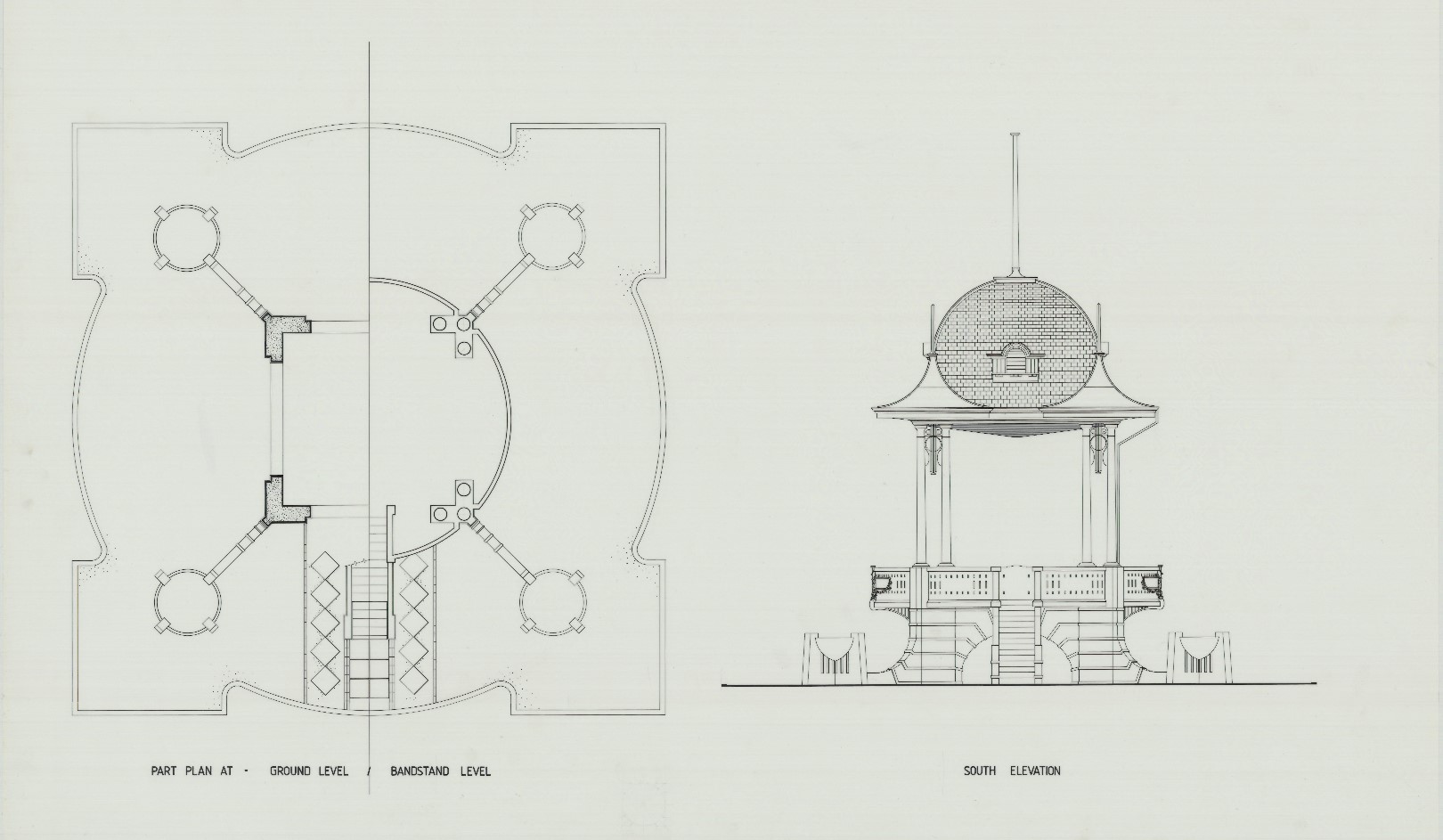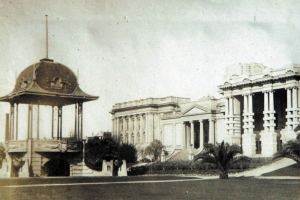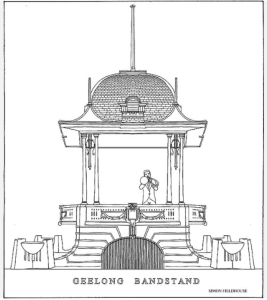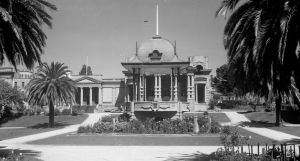
Small world, as you know. Sometimes it just surprises.
The Hitchcock Memorial Bandstand in Geelong’s old Slough of Despond, nowadays known as Johnstone Park, is one such idiosyncrasy.
Built back in 1919 to a design by Percy Everett with Laird and Buchan, it’s listed by the Victorian Heritage Database and classified as of State significance by the National Trust.
The reasons why are a bit esoteric: It’s circular in plan, the main structure supported on arched walls with diagonal wing walls terminating in stylised urns. Relief and incised decoration incorporating garlanded panels and a rusticated base is executed in cement render to the base and balustrades.


To most people, it’s just a charming old-school architectural folly admired for its quaint and pretty aspects as much as the triplets of columns connected by brackets representing lyres rising from the circular balustrade to support the elaborate roof.
Or the main roof dome clad in terracotta shingles, with centrally placed lunettes. Or, at each corner, the concave copper pyramids supporting thin copper finials of obelisk form. Check out the apex of the roof, there’s a further copper cap supporting a tall timber flagpole.
Not surprisingly, it’s drawn the attention of numerous photographers down the years. And one or two clever artists as well. Notably in the Matthew Flinders Measured Drawing Competition of 1987 where the work of Ivan Nielsen came to light.
His are delightfully skilful images, elevations and details well worthy of their presence in the State Library of Victoria.
The only others I’ve seen like them are by artist Simon Fieldhouse, known for his heritage works as well as caricatures of legal, political, religious and other figures in the book Portraits on Yellow Paper he pulled together with NSW jurist Roddy Meagher.

I mention Meagher, renowned for his razor wit as much as for being an intellectual legal giant, for a couple reasons.
First, he was my Dad’s best man after they were mates at Sydney Uni’s St John’s College in the late ’40s, early ’50s. Meagher arrived by train at Werribee for the wedding with a hay-band trouser belt, asking if he was wearing the right rural fashion.
When he wasn’t acting the country hick, he was a high-profile, provocative and humorous Justice of the Supreme Court of NSW and the Court of Appeal of NSW.
He was also the bane of politicians and lawyers, outspoken and wonderfully and supremely irascible at his best.
His brother Christopher was one out of the box, too. He became Australia’s first and only Spanish bullfighter: Cristobel Morales El Australiano.
He couldn’t practise on real bulls, had to use hombres holding horns. He complained about the corruption of the system and bribed his way into decent bullfights – all without making any real pesetas.
All of which seems a long way from Howard Hitchcock’s pretty bandstand but each time I see it I’m reminded of these bizarre ties. And the fact Hitchcock dedicated it to his mother, without naming her, mind you, on the inscription that bears his name.
But maybe it’s not such a long way. After all, Fieldhouse is an old Geelong Grammarian and the famed Geelong Football Club song is, of course, borrowed from The Toreador Song in Bizet’s Carmen. A bullfighter.
The old Roll-a-Door TV advertisement, if you can remember the one with a door sitting upright on a beach, nicked the same tune, sensibly advising viewers: “Get a garage first.”
The garage, incidentally, was invented by a Geelong architect, Arthur Purnell, way back when – but that’s another story.
Like I say, small world …
This story appeared in the Geelong Advertiser 21 April 2025.


